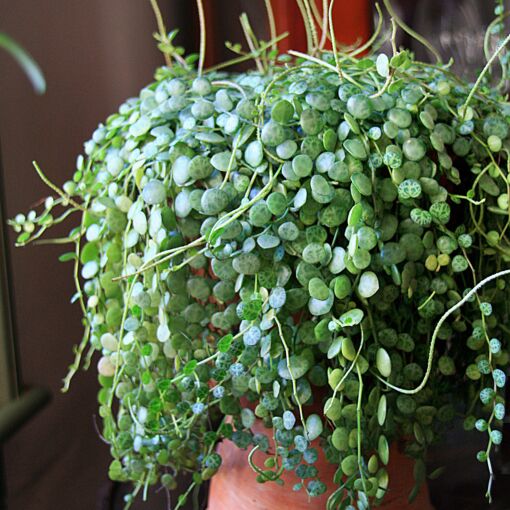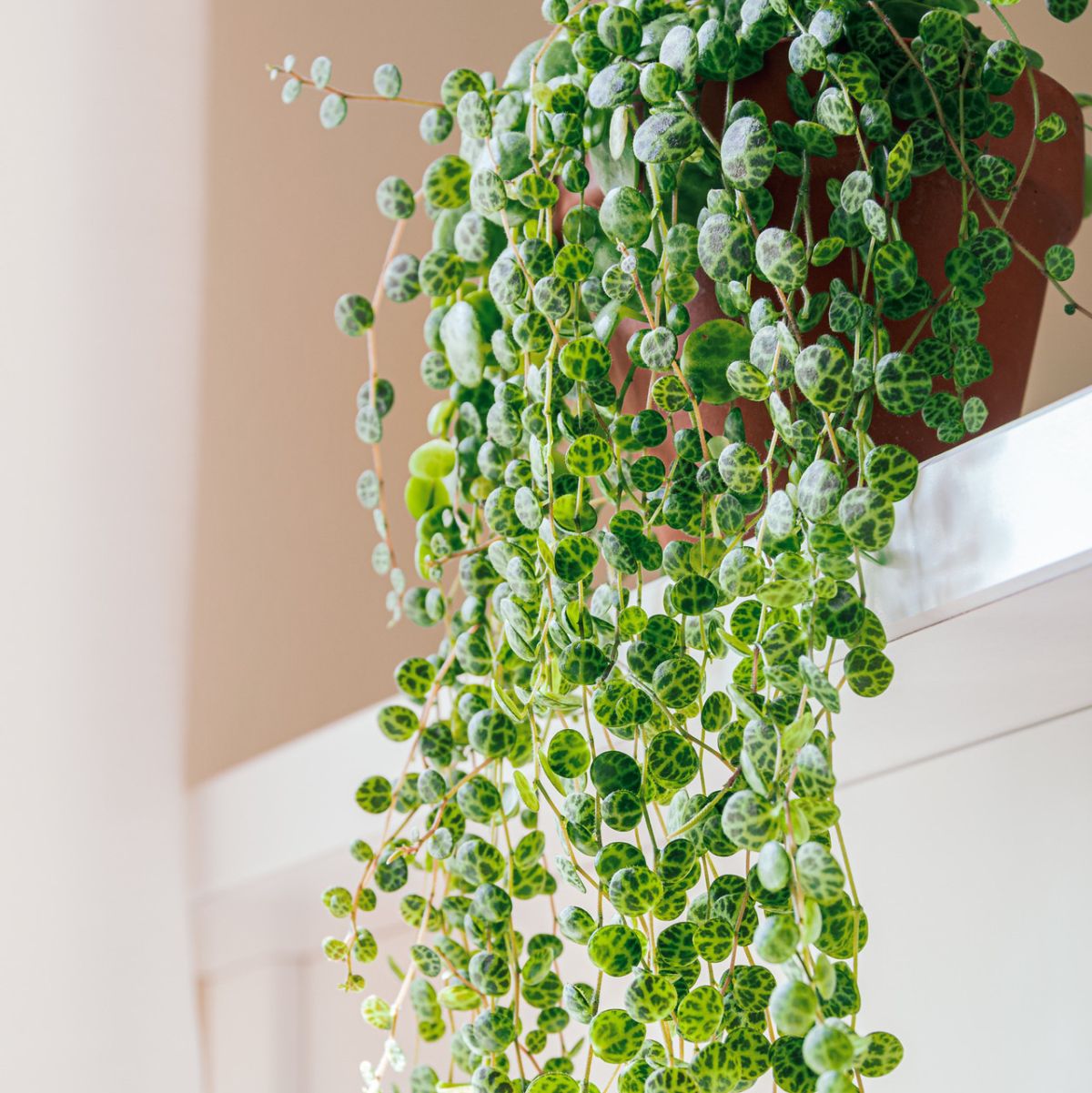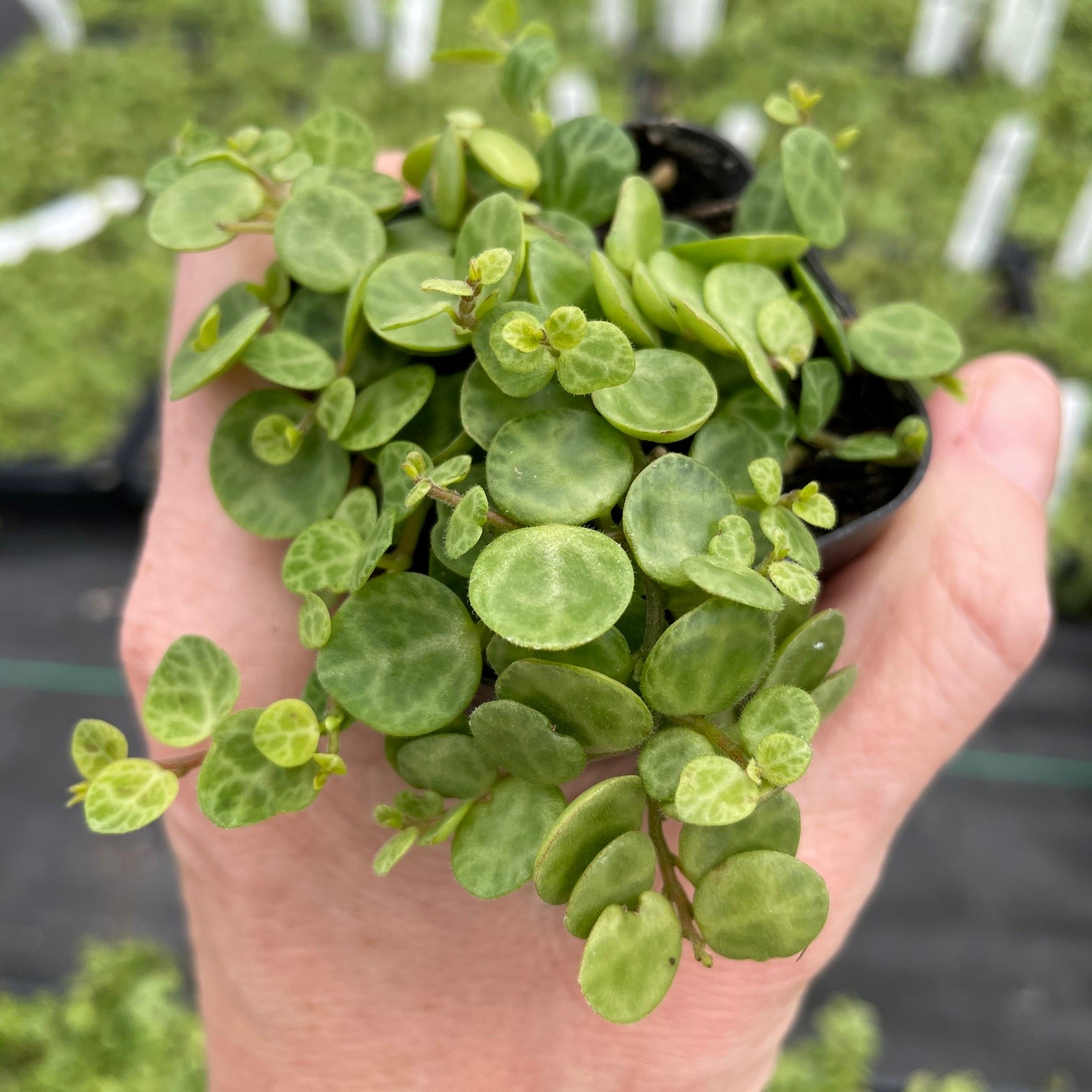
The green succulent known as “String of Turtles” earns its name from the variegated pattern on its round leaves, which resemble the shells of turtles. During the blooming season, it produces tall spikes of green with small flowers at the end of each one. This is an ideal houseplant for those looking for a pet-safe option as it grows at a slower rate.
Table of Contents
Care and Propagation Information

“String of Turtles” is a delightful cascading succulent that does well indoors when hung in a pot near a sunny window.
Even though it develops slowly, it can still expand if not exposed to enough sunlight. Make sure there is adequate air flow close to its container so that the soil doesn’t become too moist, as it is prone to root rot if watered too frequently.
Watering
“String of Turtles” is often seen as a houseplant, though it is still a succulent. To ensure its health and wellbeing, it’s important to follow the “soak and dry” method when watering it. This means that it needs to have alternating periods of drought and flood.
If the “String of Turtles” is receiving too much water, its leaves can start to drop off. It is best to reduce the frequency of watering in the winter and to maintain a higher humidity level (around 50%) for the plant.
Where to Plant
If you live in an area with temperatures below 30° F (-1.1° C), it’s advisable to put the Peperomia prostrata in a pot that can be taken indoors due to its lack of cold-hardiness.
How to Propagate Peperomia prostrata “String of Turtles”
Propagating “String of Turtles” is a simple process. Cut a stem from the plant with a pair of clean scissors, allowing the stem to form a callous over a few days. After that, place the stem in potting soil that drains well and water it when the soil is totally dry.
It is possible to propagate “String of Turtles” plants by growing them from seed.
Care and Propagation Information
General Care for Peperomia prostrata “String of Turtles”

Even though it develops slowly, it can still expand if not exposed to enough sunlight. Make sure there is adequate air flow close to its container so that the soil doesn’t become too moist, as it is prone to root rot if watered too frequently.
Watering
“String of Turtles” is often seen as a houseplant, though it is still a succulent. To ensure its health and wellbeing, it’s important to follow the “soak and dry” method when watering it. This means that it needs to have alternating periods of drought and flood.
If the “String of Turtles” is receiving too much water, its leaves can start to drop off. It is best to reduce the frequency of watering in the winter and to maintain a higher humidity level (around 50%) for the plant.
Where to Plant
If you live in an area with temperatures below 30° F (-1.1° C), it’s advisable to put the Peperomia prostrata in a pot that can be taken indoors due to its lack of cold-hardiness.
How to Propagate Peperomia prostrata “String of Turtles”
Propagating “String of Turtles” is a simple process. Cut a stem from the plant with a pair of clean scissors, allowing the stem to form a callous over a few days. After that, place the stem in potting soil that drains well and water it when the soil is totally dry.
It is possible to propagate “String of Turtles” plants by growing them from seed.
